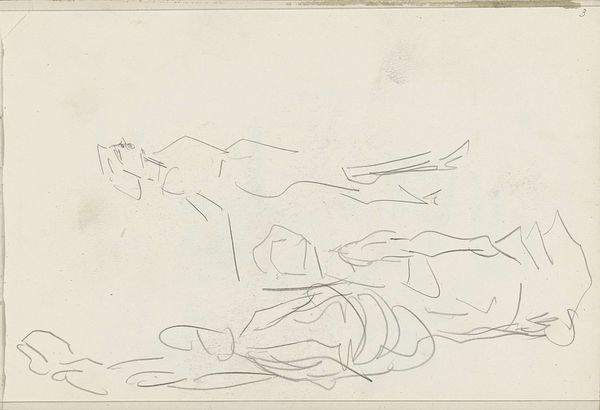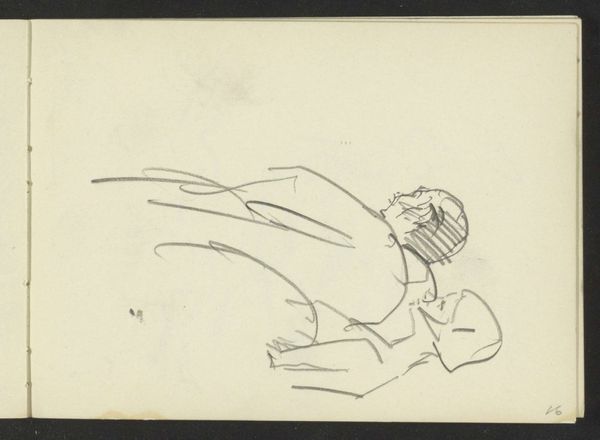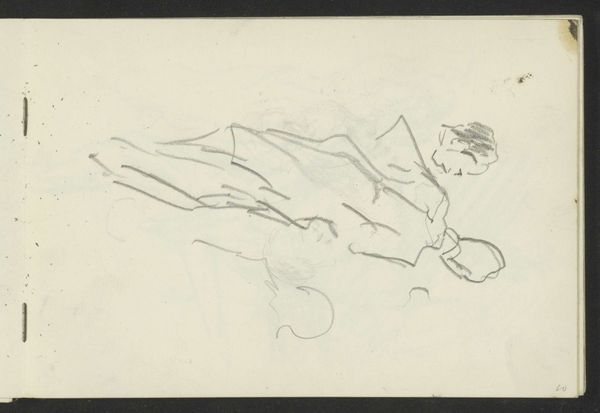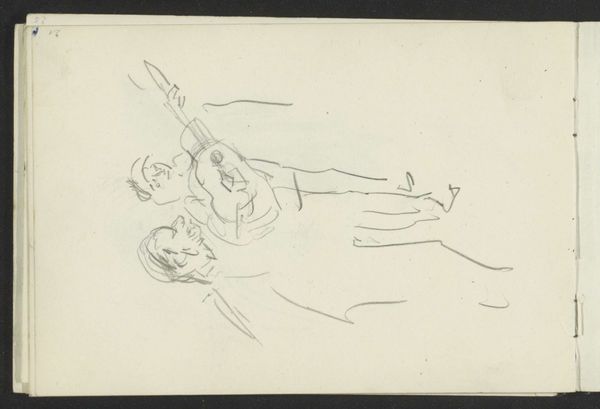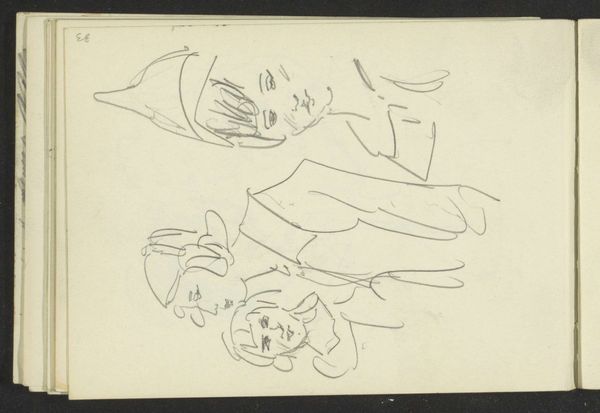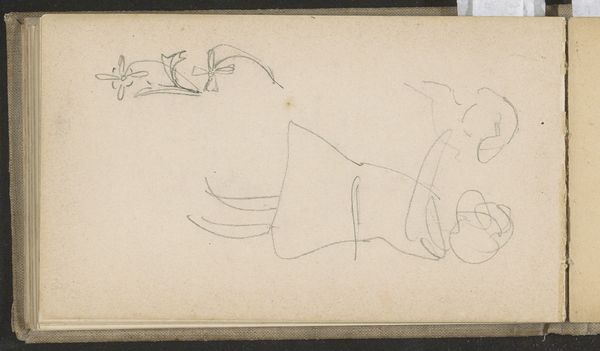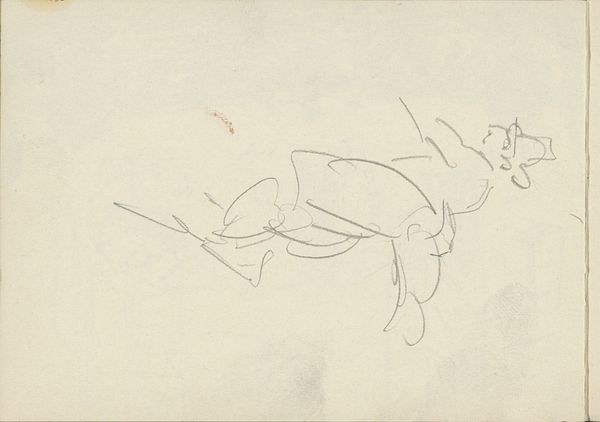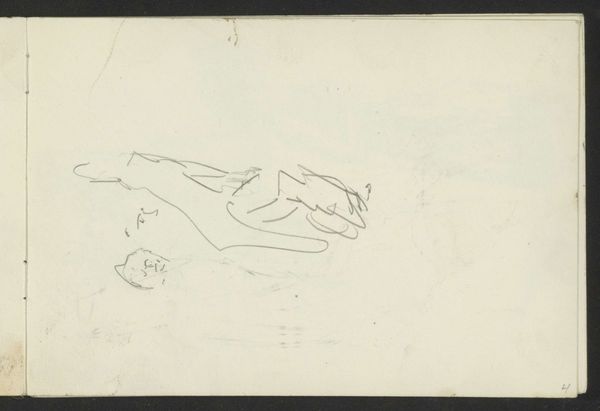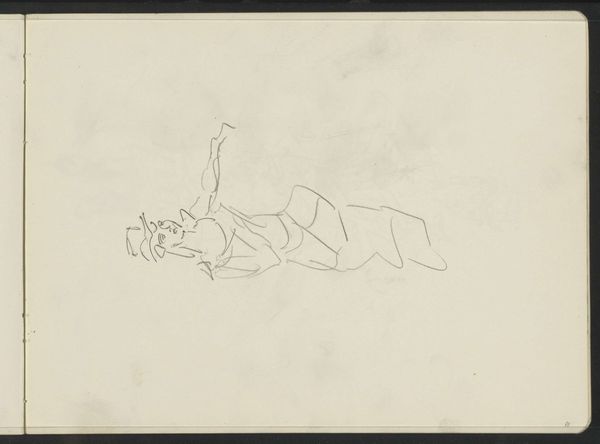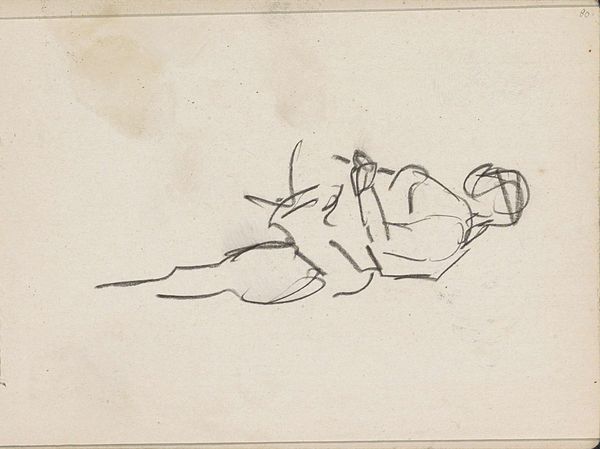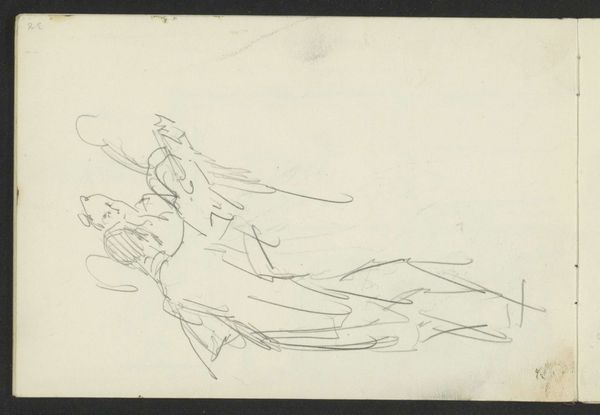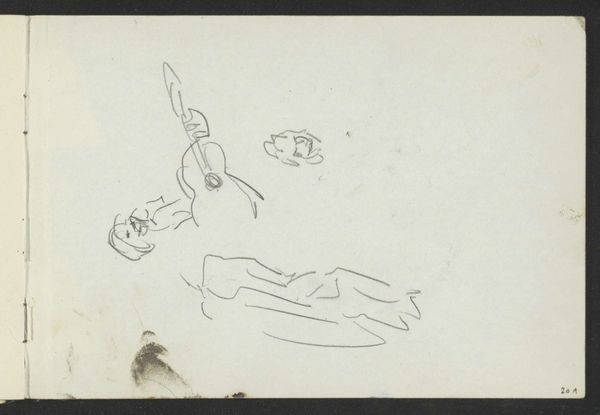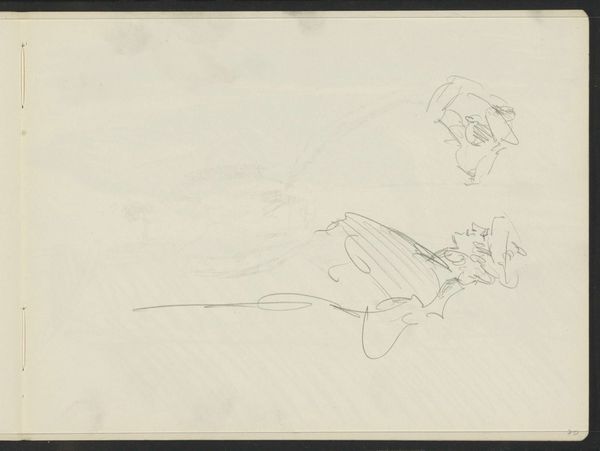
drawing, paper, pencil
#
portrait
#
drawing
#
figuration
#
paper
#
pencil
#
modernism
Copyright: Rijks Museum: Open Domain
Curator: This pencil drawing, titled "Twee figuren," or "Two Figures," is the work of Isaac Israels, likely created sometime between 1923 and 1934. It’s currently held in the Rijksmuseum collection. What stands out to you initially? Editor: There's an incredible sense of spontaneity and intimacy here. It feels almost voyeuristic, like catching a private moment of repose. The minimal lines give it an unfinished quality. It’s very direct. Curator: I agree. Israels was fascinated with capturing modern life as it unfolded. We see that quickness of hand across his oeuvre. And, of course, portraiture offered artists the opportunity to negotiate social identity through pose and implied narrative. What narrative do you read here, even in its implied state? Editor: To me, these figures, especially the lower one, seem weary or perhaps unwell. It's interesting how even with so few lines, Israels conveys such a strong feeling. You almost want to ascribe to the sitter agency and maybe an understanding of their participation in larger colonial exploitation in the East Indies? Curator: Precisely! And considering the historical context—Israels had returned to the Netherlands from his extended period painting in the Dutch East Indies only a few years earlier—it is possible he was capturing his impressions of how society ladies interacted or idled their time during his time painting back in Europe. We might read their positionality as related to a time of relative prosperity in some societies while exploitation and repression persisted elsewhere. Editor: Exactly, it highlights that the depicted ‘leisure’ comes at someone else's expense. Even the sketch's very ephemerality underlines the transient nature of such privilege, of those sorts of power relations. I’m also drawn to how unidealized the figures appear. It feels like an anti-portrait. Curator: Israels, while often working within established genres, did frequently push against the boundaries of academic tradition. It's work such as "Twee figuren" that demonstrates he had an eye for distilling and communicating a subtle and modern sense of detachment within a social structure. Editor: Thinking about art's function within societal norms…this sketch does seem to break from established practices! It gives one insight into possible subversive observations or interpretations related to both class and gender. Curator: A beautiful observation. This sketch provides an intriguing perspective from Isaac Israels’ perspective, one that can lead us to examine larger cultural considerations around politics and society during that era.
Comments
No comments
Be the first to comment and join the conversation on the ultimate creative platform.
